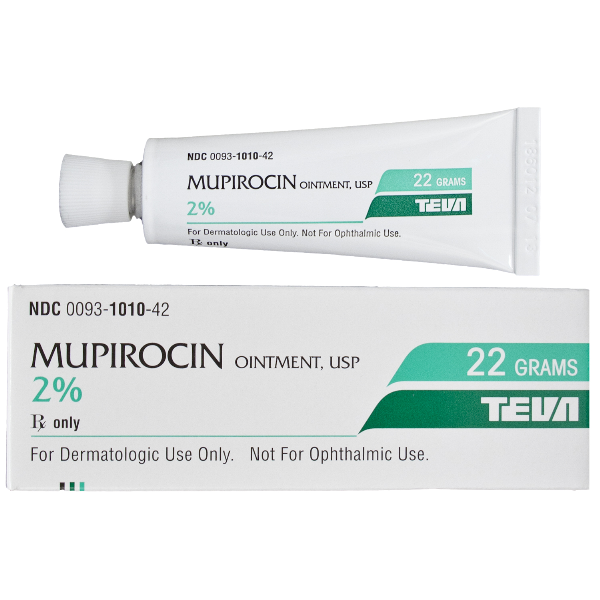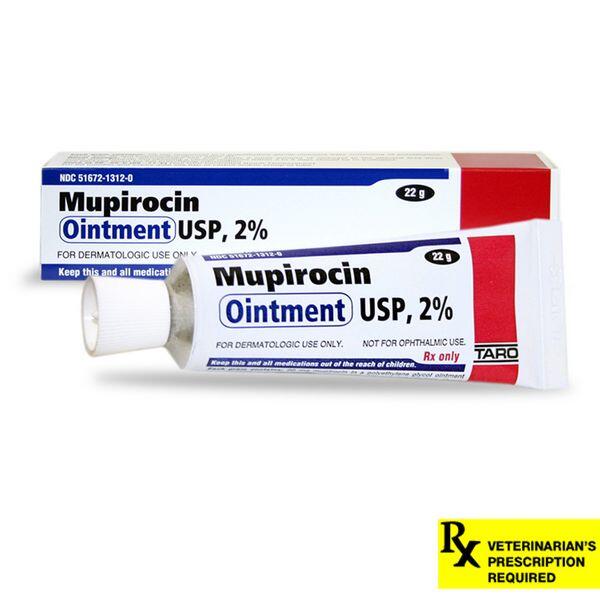Drug Nomenclature

Pharmacopoeias
In Europe and US
European Pharmacopoeia
A white or almost white powder. It shows polymorphism. Slightly soluble in water; freely soluble in dehydrated alcohol, in acetone, and in dichloromethane. The pH of a freshly prepared saturated solution in water is 3.5 to 4.0. Protect from light.
The United States Pharmacopeia
A white to off-white crystalline solid. Very slightly soluble in water; freely soluble in dehydrated alcohol, in acetone, in chloroform, and in methyl alcohol; slightly soluble in ether. pH of a saturated solution in water is between 3.5 and 4.5. Store in airtight containers.
Mupirocin Calcium
Drug Nomenclature

Pharmacopoeias
In Europe, Japan, and US
European Pharmacopoeia
A white or almost white powder. Very slightly soluble in water; sparingly soluble in dehydrated alcohol and in dichloromethane.
The United States Pharmacopeia
Store in airtight containers at a temperature of 25°, excursions permitted between 15° and 30°.
Adverse Effects and Precautions
Mupirocin is usually well tolerated but local reactions such as burning, stinging, and itching may occur after the application of mupirocin to the skin. Some mupirocin products are formulated in a macrogol base: such formulations are not suitable for application to mucous membranes and should be used with caution in patients with extensive burns or wounds because of the possibility of macrogol toxicity. Care is also required in patients with renal impairment.
Antimicrobial Action
Mupirocin is an antibacterial that inhibits bacterial protein synthesis by binding to isoleucyl transfer RNA synthetase. It is mainly bacteriostatic at low concentrations, although it is usually bactericidal in the high concentrations achieved by topical application to the skin. At these concentrations it may have some activity against organisms reported to be relatively resistant to mupirocin in vitro. It is mainly active against Gram-positive aerobes.
Most strains of staphylococci (including meticillin-resistant and multiply-resistant Staph. aureus) and streptococci are susceptible in vitro, although the enterococci are relatively resistant. Mupirocin is also active against Listeria monocytogenes and Erysipelothrix rhusiopathiae. The Gram-negative organisms are generally insensitive, but Haemophilus influenzae, Neisseria spp. and a few others are sensitive.
Anaerobic organisms, both Gram-positive and Gram-negative, are generally resistant, and activity against fungi is low. Mupirocin is more active in vitro at acid pH than in alkaline conditions. Naturally resistant strains of Staph. aureus occur rarely but resistance, including high-level plasmid-mediated transferable resistance, has emerged, particularly during long-term use. There has been some concern that inappropriate prescribing of mupirocin has led to this steadily increasing resistance.
Activity against fungi
Activity of mupirocin 2% in vitro against Candida albicans was comparable to that of other commonly used topical antifungals. Although MICs were considerably in excess of those reported for susceptible bacteria, clinical responses in 10 patients suggested that adequate concentrations of mupirocin were achieved after topical application.
Pharmacokinetics
Only very small amounts of topically applied mupirocin are absorbed into the systemic circulation where it is rapidly metabolised to monic acid which is excreted in the urine.
Uses and Administration
Mupirocin is an antibacterial produced by Pseudomonas fluorescens. It is applied topically as a 2% ointment in a macrogol base, or as a cream containing mupirocin calcium equivalent to 2% mupirocin, in the treatment of various bacterial skin infections. These preparations should be applied up to 3 times daily for up to 10 days; treatment should be re-evaluated if there is no response after 3 to 5 days.
They are not suitable for application to mucous membranes, and therefore a nasal ointment containing mupirocin calcium equivalent to 2% mupirocin in a paraffin basis is used for eradication of the nasal carriage of Staphylococcus aureus, particularly epidemic meticillin-resistant strains.
The nasal ointment should be applied into each nostril 2 or 3 times daily for a maximum of 7 days. For further details of skin infections and staphylococcal infections and their treatment, see under Choice of Antibacterial.
Preparations
British Pharmacopoeia 2008: Mupirocin Ointment; The United States Pharmacopeia 31, 2008: Mupirocin Cream; Mupirocin Ointment.
Proprietary Preparations
| Country | Medication Names |
|---|---|
| Argentina | Bactroban; Mupax; Mupirox; Paldar; Vidox |
| Australia | Bactroban |
| Austria | Bactroban |
| Belgium | Bactroban |
| Brazil | Bacrocin; Bactocin; Bactroban; Bactroneo |
| Canada | Bactroban |
| Chile | Bactroban; Bantix; Ultrabiotic; Underan |
| Czech Republic | Bactroban |
| Denmark | Bactroban |
| Finland | Bactroban |
| France | Bactroban; Mupiderm |
| Germany | InfectoFyoderm; Turixin |
| Greece | Bactroban; Bactrocine; Hevronaz; Micoban; Mupider; Mupiran; Veltion |
| Hong Kong | Bactroban |
| Hungary | Bactroban |
| India | Bactroban; Supirocin |
| Indonesia | Bactoderm; Bactroban; Pibaksin |
| Ireland | Bactroban |
| Israel | Bactoderm; Bactroban |
| Italy | Bactroban; Mupiskin |
| Japan | Bactroban |
| Malaysia | Bactroban; Muprin |
| Mexico | Bactroban; Sinpebac |
| The Netherlands | Bactroban |
| New Zealand | Bactroban |
| Philippines | Bactifree; Bactroban; Foskina |
| Poland | Bactroban; Mupirox |
| Portugal | Bactroban |
| Russia | Bactroban |
| South Africa | Bactroban |
| Singapore | Bactroban; Supirocin |
| Spain | Bactroban; Plasimine |
| Sweden | Bactroban |
| Switzerland | Bactroban |
| Thailand | Bactex; Bactroban; Muporin |
| Turkey | Bactroban |
| United Kingdom (UK) | Bactroban |
| USA | Bactroban; Centany |
| Venezuela | Bactroban; Bactrobandos |
Multi-ingredient
India: Supirocin-B.

















